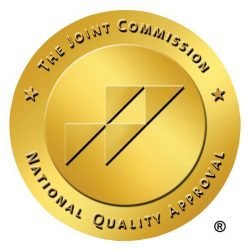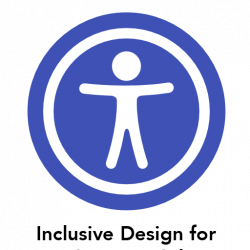Choosing the best method and level of eating disorder care
Eating disorder recovery is difficult, and getting started can be overwhelming
Please join us on June 23 9:00 AM – 10:00 AM / PT for Where to Begin: Choosing the Best Method and Level of Eating Disorder Care
With so many options available and much to consider, how do you know which eating disorder treatment option fits your clients’ recovery?
You might also be interested in:
-
Joyful Movement During COVID-19 and Social Distancing
-
Best Practices in Response to Coronavirus
-
Getting Your Clients the Help They Need: Overcoming Common Roadblocks
Beginning the eating disorder journey
The need for eating disorder recovery services has risen significantly during COVID-19. Eating disorder clients need our help now more than ever.
It is essential to know that lasting recovery from an eating disorder is not only possible but probable with the right method of treatment at the right level of care. At the same time, making those first level-of-care decisions can be complicated and confusing because what may be right for one client may not be right for another client. COVID-19 has created even more ambiguity around making level-of-care recommendations.
These are uncharted waters, but with the technology and adaptive programming available today, recovery is not canceled. In fact, in some ways, there has never been a better time to prioritize self-care and healing. Still, our clients’ success depends heavily upon our ability to assess their medical acuity and recommend the most appropriate level and method of care for each unique individual.

Full recovery requires a continuum of care
A spectrum of treatment options is available for clients with a variety of eating disorders and symptoms. APA Level of Care Guidelines are often used to determine the most appropriate level of eating disorder care for clients seeking help. This is the tangible beginning of the eating disorder journey; when referents recommend the appropriate level of care for their eating disorder client, they help set the stage and trajectory for client safety and success in their recovery.
During COVID-19 restrictions, we’ve seen how virtual care methods may be used to decrease virus exposure. And by providing more virtual programming options, we’ve been able to transition clients with the right medical acuity to telehealth programming, thus making our in-person options more available for clients who need a higher level of care.
In-person eating disorder care
We’ve worked hard to keep in-person options safe and available because we value client choice and because, for many clients, in-person treatment is clinically and medically indicated over virtual treatment.
The recovery journey cannot begin unless clients, families, and referents have confidence in their treatment team. And now more than ever, clients and their loved ones have understandable concerns and questions about the safety of treatment facilities.
Clients, families and referents need reassurance in making these big decisions. As part of their recovery team, we need to be prepared to ease concerns and answer questions about what we’re doing to ensure client safety.
Here are some good things to know while considering any eating disorder treatment center during pandemic:
- Do clients and staff wear masks?
- What are their COVID-19 screening protocols?
- What are the hand-washing and hygiene requirements?
- What Social Distancing techniques have been put in place?
- What would they do if a client has COVID-19?
- What training has the staff received on coronavirus prevention and COVID-19 treatment?
- How do I know if I need in-person care?
Virtual (telehealth) eating disorder care
Since COVID-19 began, it’s not surprising to hear that the demand for virtual mental health services across the United States has increased significantly. This is due to the convenience and safety of virtual programming and also because COVID-19 itself has exacerbated mental health issues and people who have never sought therapy or other mental health services are doing so now for the first time.
Eating disorder clients who meet the medical acuity requirements and need less supervision and support benefit significantly from virtual treatment. That being said, telehealth was never meant to replace in-person treatment for all or even most clients. Virtual treatment plans simply provide the flexibility needed to meet even more clients where they are in their recovery.
Our virtual clients receive meal support and meet with their therapist and registered dietitian on a weekly basis and are guided through mindful movement and yoga from the safety and security of their home environment. They also experience a sense of community with their treatment group, which is so life-giving, especially for those who live alone or are otherwise feeling isolated.
Clients, their loved ones, and referents must have confidence in the efficacy of virtual services. Here are some great questions to ask:
- How are meals supported?
- How is nursing addressed at PHP?
- How are biometrics (e.g., weight, vitals) measured?
- How do I know if virtual is right for me?

Blended eating disorder programming
Selecting the right level of care and delivery method isn’t black and white. Eating disorders are as diverse as the people who have them, and we believe that clients experience more success and holistic healing when their team can meet them where they are in recovery. Some clients need less in-person care than others, but are not quite ready for a fully virtual program.
Providing a blend of virtual and in-person services can help clients find their way in recovery based on their specific needs.
A blended treatment option may be a good choice for clients who still need in-person support, but want to reduce risk of COVID-19 through social distancing. Talk to your clients about their concerns, and make sure they feel heard and empowered to ask questions about their safety and their different options.
Assured for peace of mind
Recovery is not an easy process, and as with any epic journey the first steps can be scary and steep. Removing access-to-care barriers for all who are ready to live a fully recovered life is part of our job as eating disorder treatment professionals. Client care begins well before they arrive at our facility (or log on to a Zoom session). It is important to provide clients and their family members with reassurance, peace of mind, and support as they take these first brave steps.
Unless we can ease any anxieties or uncertainty, they may have about seeking, receiving, and/or traveling to receive help, some people might never get the treatment they need. In addition to making sure that each individual finds the safest, most appropriate treatment plan, it can be helpful for clients and their loved ones to be able to ask questions and review safety protocols for any treatment center they are considering.
Another obstacle to recovery is the stress of travel arrangements and other accommodations- especially right now. Treatment centers with the resources to do so might offer clients free travel support, help booking flights or hotels, or even safe travel tips and guidelines. Not only does this make travel more convenient, but it’s also one of the first opportunities to show clients and their loved ones what it means when you say that you’re in this together.

We Are Here to Help
Speak to a masters-level assessment specialist for guidance & support Monday–Friday from 6 am–6 pm (PST).

Virtual Treatment Options
Meeting each client where they are on their recovery journey. Virtually.
Our Recommended Articles
Start the road to recovery with Alsana.








